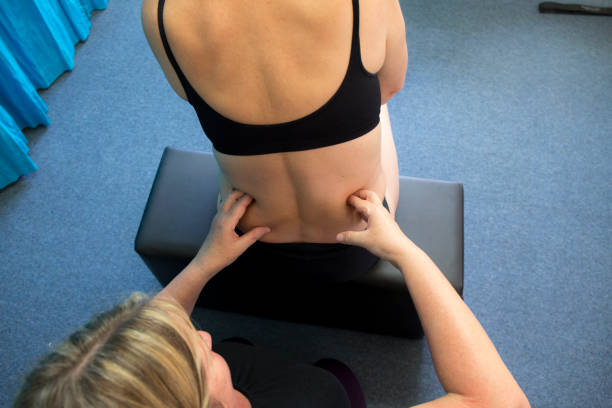
Pregnancy is a journey filled with anticipation, excitement, and physical changes that sometimes catch expecting mothers off-guard. While morning sickness and tiredness are expected, some discomforts—like pelvic girdle pain (PGP)—can come as an unwelcome shock. This condition is more common than many realize and can have a real impact on a woman’s daily life.
Globally, PGP affects up to 1 in 5 pregnant women, as reported by the Royal College of Obstetricians and Gynecologists. In India, studies suggest that nearly 25–30% of women experience moderate to severe pelvic pain, especially during the second and third trimesters. Though common, it can greatly affect mobility, emotional well-being, and overall quality of life during pregnancy.
Dr. Himali Maniar, a compassionate gynecologist in Bopal, Ahmedabad, notes,
“Pelvic girdle pain can be deeply distressing for expectant mothers, especially when they’re unprepared for it. The right knowledge and support can make all the difference. With early diagnosis and customized care, most women can find significant relief and continue to enjoy a smooth pregnancy.”
Understanding Pelvic Girdle Pain (PGP)
What Causes Pelvic Girdle Pain During Pregnancy
PGP usually results from a combination of hormonal, mechanical, and postural changes in a woman’s body during pregnancy. Here’s how:
Hormonal Shifts
Weight Gain
Postural Changes
Previous Pelvic Injuries
Uneven Joint Movement
Dr. Himali Maniar, an insightful obstetrician in Bopal, shares,
“Understanding the multifactorial nature of PGP helps us personalize each woman’s care. In some cases, a simple postural correction brings relief, while in others, we may explore physiotherapy or support belts.”
Symptoms of Pelvic Girdle Pain

PGP manifests differently in each woman, but common symptoms include:
- Pain in the lower back, hips, groin, or thighs
- Discomfort when walking, climbing stairs, or turning in bed
- A clicking or grinding sensation in the pelvic area
- Increased pain after prolonged sitting or standing
- Difficulty lifting one leg (e.g., when getting out of a car)
These symptoms can intensify as pregnancy progresses, especially in the third trimester.
Is PGP Dangerous for You or Your Baby?
PGP itself doesn’t pose any direct risk to the baby, but it can lead to secondary concerns like reduced mobility, anxiety, and disrupted sleep for the mother. In severe cases, women may find it challenging to carry out daily activities, which affects their emotional and physical well-being.
Research indicates that while PGP doesn’t typically affect labor or delivery outcomes, unmanaged pain can lead to early inductions or elective C-sections due to fear or discomfort.
Dr. Himali Maniar, a seasoned prenatal and antenatal care expert, states,
“Pain management is as crucial as any other aspect of pregnancy. A physically and emotionally balanced mother is more likely to have a smoother delivery and postpartum recovery.”
Safe Ways to Relieve Pelvic Girdle Pain During Pregnancy

There are gentle, effective strategies to ease PGP that can be done at home or with professional guidance:
Pelvic Physiotherapy: A trained physiotherapist can guide exercises that strengthen pelvic muscles.
Use of Support Belts: Maternity support belts help stabilize joints and ease pressure.
Warm Compresses: Applying gentle heat to sore areas can alleviate tension.
Adjusting Sleep Position: Sleeping with a pillow between the knees keeps the pelvis aligned.
Avoiding Triggers: Minimizing movements like wide steps or standing on one leg reduces strain.
Treatment Options for Severe PGP

“In severe cases, we work closely with physiotherapists, orthopedists, and even mental health professionals to address PGP from every angle.”
Tips to Prevent Pelvic Girdle Pain in Future Pregnancies
While not always preventable, certain strategies can lower the likelihood or severity of PGP in future pregnancies:
Strengthen Core Muscles: A strong core offers better support to the pelvis.
Maintain Healthy Weight: Excessive weight gain adds pressure on pelvic joints.
Posture Training: Learn and maintain correct posture while sitting, standing, or lifting.
Early Physiotherapy: Even before symptoms begin, physiotherapy can build resilience.
Address Previous Injuries: Consult a specialist if you’ve had past back or pelvic injuries.
When to See a Specialist for Pelvic Girdle Pain
It’s crucial to consult a specialist if:
- The pain limits your daily routine
- You feel unbalanced while walking
- Sleep is regularly disturbed
- Home remedies aren’t offering relief
- There’s pain radiating to your legs
Don’t hesitate—early intervention can prevent complications and make your pregnancy experience more comfortable.
Frequently Asked Questions
Can PGP start in early pregnancy?
Yes, while more common in the second and third trimesters, some women may experience PGP in early pregnancy due to hormonal changes and pelvic instability.
Is pelvic girdle pain the same as sciatica?
No. While both involve lower body pain, sciatica typically stems from nerve compression and radiates down the leg, whereas PGP involves joint and ligament pain in the pelvic area.
Can I exercise with pelvic girdle pain?
Yes, but it’s essential to follow a physiotherapist’s guidance. Focus on low-impact exercises that strengthen the core and stabilize the pelvis.
Is PGP a reason for a C-section?
Not necessarily. Most women with PGP can have vaginal deliveries. However, severe, unmanaged pain might lead to alternative birth plans for comfort.
How soon should I start physiotherapy for PGP?
As early as possible. Starting physiotherapy at the onset of symptoms often prevents worsening and supports better mobility throughout pregnancy.


